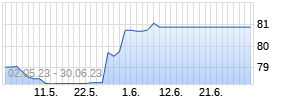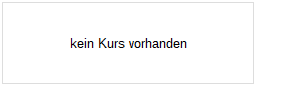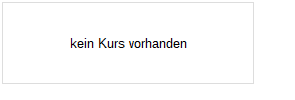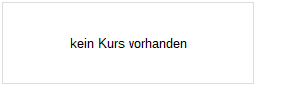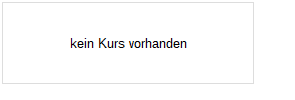
Viele Anleger sind weiter überzeugt, dass die Inflation wahrscheinlich zurückgehen wird, ohne das Wirtschaftswachstum wesentlich zu beeinträchtigen.
07.07.2023 - Investors remain convinced that inflation is likely to come down without much of a hit to economic growth. However, there is not much historical precedent for such an outcome, especially since monetary tightening is not completed, and the effects of higher policy rates are yet to be felt completely.
China and the Eurozone disappoint...
Global economic activity has been marked by unusually large sectoral divergence this year. The goods sector has been weak, held back by both the monetary tightening and an unwind in the 2020-22 tech sector boom. The S&P Global manufacturing business confidence index fell to 48.8 in June, signalling a worsening in operating conditions for ten consecutive months(1). However, investors remained sanguine regarding the economic outlook as the services sector held out, fuelled by the combination of robust labour markets with a still solid stock of household savings and residual post-Covid pent-up demand.
Regional divergences have also been sizeable. According to the National Bureau of Statistics’ business confidence survey, China’s economy lost more steam in June with manufacturing activity contracting again and other sectors failing to build momentum. What’s more, a sub-index gauging employment in the nonmanufacturing sector slid to 46.8 in June from 48.4 the previous month, and a deterioration in the labour market risks exacerbating a youth jobless rate that is already at a record high while also further dampening household income confidence. Calls are growing for more policy support, and the People’s Bank of China cut policy interest rates in June for the first time in nearly a year, signalling looser monetary policy. However, officials have been slow to introduce comprehensive measures as provincial governments are facing unprecedented debt burdens following a collapse in land sales, a slowing economy, and the impact of Covid lockdowns over the years. Concerns about the impact of more rate cuts on the yuan is also among factors limiting the scope for support.
Meanwhile, the Eurozone confidence indicators took another step down in June, with both S&P Global PMI and EC sentiment falling. Weaker signals about the German economy are evident, the Ifo (2) business expectations sub-index being particularly weak and pointing to a sharp growth deceleration since April as the economy is already in a technical recession. Yet, while confidence declined markedly in the manufacturing sector, services display more resilience and have been the main growth driver in recent months in the region, whereas the unemployment rate remained at 6.5 per cent in May, a record-low since the introduction of the euro(3).
... while US data are mixed
US economic growth has been revised up to 0.7 per cent q/q from 0.4 per cent in Q1-23 (4) thanks to more favourable net exports and buoyant consumer spending, although business investment was weak. Meanwhile, home builders’ confidence surprised to the upside in June, the NAHB’s Housing Market Index (5) jumping to 55 from a depressed level (31) only six months prior. Furthermore, housing starts unexpectedly surged in May, reaching their highest level since April 2022. In fact, recent housing data have not only stabilised, but are showing signs of rebounding from recent lows. Home prices rose once again in April on a sequential basis, pushed up by a combination of growing buyer demand and tight supply, as homeowners who’ve locked in multi-decades low mortgage rates during the pandemic boom are reluctant to sell and find themselves with much higher monthly payments.
However, the economic outlook remains murky as the yield curve(6) has inverted sharply and the Conference Board(7) leading economic indicator fell to a depressed level, both of which historically have been a very good leading indicator for recessions. Furthermore, the ISM manufacturing index(8) dropped to a depressed 46 in June, its lowest reading since 2009 barring the short-lived plunge during the first months of the pandemic.
Unfinished monetary tightening
June was an extraordinary month for central banks. The Bank of England surprised markets by increasing its interest rates for the thirteenth consecutive time by an unexpectedly large 50 basis points. The ECB raised rates and signalled more to come – most likely as soon as at its July meeting – despite the economy shrinking in late 2022 and early 2023 and disappointing business confidence. The central banks of Australia and Canada resumed rate increases after a pause in their tightening cycles, while smaller central banks in Norway and Switzerland continued on their path of raising rates. The Fed chose not to raise rates despite officials increasing their inflation forecasts, but guided markets towards an extended period of higher interest rates with a July hike likely. Despite repeated forecast errors, investors remain convinced that inflation will recede relatively quickly thanks to the drop in commodity prices, lower transportation costs and the unwinding of supply chain disruptions. Yet, while headline inflation has declined, the stickier components remain persistently high, pressuring central banks to maintain their tightening bias despite a somewhat deteriorating economic outlook.
The tightness of labour market is also cause for concern. Almost everywhere, unemployment rates are far below what academics judge to be consistent with central banks’ inflation objective. The ratio of unfilled jobs to unemployed workers remains elevated and wage growth has been solid and is picking up – especially in Europe – though not by enough to begin reversing sharp declines in real wages over the past two years. In fact, consumer prices that are too high for too long could make the task of bringing inflation down difficult. Given the decline in real wages since the pandemic, wage catchup is to be expected and business will have to absorb some of the expected rise in labour costs through lower profit margins. However, if they were to resist and instead decide to pass on the cost to consumers, inflation reduction would only be gradual which risks disanchoring expectations and producing further upside cost pressures. Overall, recent surveys have hinted at a slowdown in economic growth, but underlying inflation is proving more persistent, pressuring central banks to hike rates further, a combination that may well not end as well as investors’ (over)optimistic scenario.
Finden Sie hier den vollständigen Artikel "Monthly Macro Insights | July 2023" (in englischer Sprache) mit Grafiken.
Completed writing on 5 July 2023.
(1) Above 50, this index indicates an expansion in activity, below 50, a contraction. (2) Survey of 700 German companies in the manufacturing, construction, wholesale and retail sectors. (3) Eurostat, July 2023. (4) Bureau of Economic Analysis, June 2023 (5) NAHB: Home Builders' Confidence Index. (6) Bloomberg, June 2023. (7) Macrobond, June 2023. (8) ISM Index: reflects the perception of decision-makers in the US manufacturing sector. It is published on the first working day of each month by the Institute for Supply Management.
The survey reflects purchasing managers' perceptions of how their own companies and the manufacturing industry as a whole are faring compared with the previous month.




